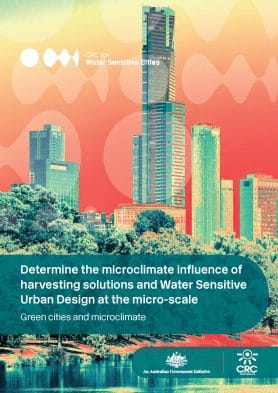Green Cities and Micro‐climate – Interim Report
Water Sensitive Urban Design (WSUD) has the potential to provide cooling effects across the urban landscape through both evapotranspiration and shading. A review of the literature has identified that there is capacity to intentionally modify urban climates by reintegrating stormwater back into the urban landscape through WSUD. However, there is little empirical evidence demonstrating the climate benefits of WSUD and it has been identified that more research is needed to quantify the intensity of cooling and improvement to human thermal comfort from WSUD features. This interim report provides information on the data gathering from household (micro) scale field systems that support this aim. A number of household scale research projects are currently underway that attempt to improve our understanding of how WSUD acts to modify the microclimate, and what this may mean for human thermal comfort.Abstract
